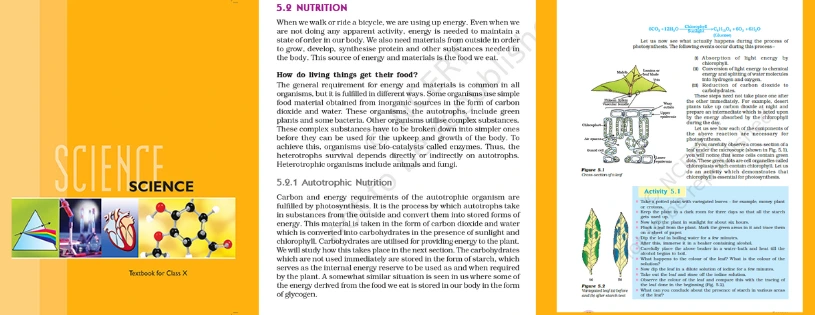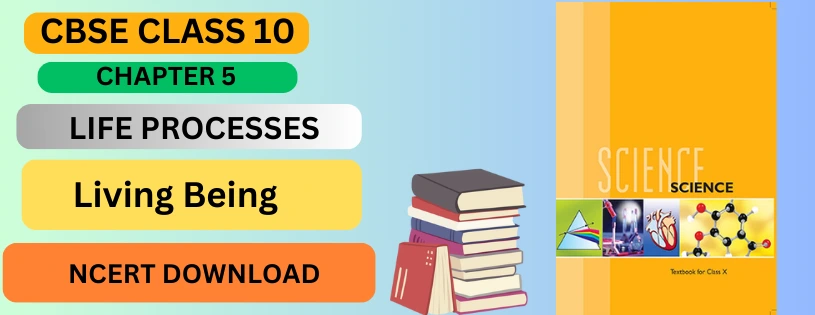In the dynamic realm of education, the Central Board of Secondary Education (CBSE) and the National Council of Educational Research and Training (NCERT) stand as pillars of academic excellence, providing students with a comprehensive and standardized curriculum. Today, as we embark on a journey into the captivating subject of "Living Beings," the synergy between CBSE and NCERT offers a robust foundation for our exploration. This union ensures that students receive a holistic and scientifically sound understanding of the intricate world of living organisms. Moreover, with the advent of digital education, the phrase "CBSE NCERT Download" takes on a new significance, unlocking a plethora of resources that enrich the study of living beings. Let us delve into this captivating topic, leveraging the educational prowess of CBSE and NCERT, as we unravel the mysteries of life that surround us.
Unlocking the Wonders of Life: CBSE NCERT Download Explores the Fascinating Realm of Living Beings
Nutrition: The process by which an organism takes food and utilizes it, is called nutrition.
-
Need for Nutrition: Organisms need the energy to perform various activities. The energy is supplied by the nutrients. Organisms need various raw materials for growth and repair. These raw materials are provided by nutrients.
-
Nutrients: Materials that provide nutrition to organisms are called nutrients. Carbohydrates, proteins, and fats are the main nutrients and are called macronutrients. Minerals and vitamins are required in small amounts and hence are called micronutrients.
-
Modes of Nutrition
1. Autotrophic Nutrition.
2. Heterotrophic Nutrition.
Nutrition in Plants: Green plants prepare their own food. They make food in the presence of sunlight. Sunlight provides energy, carbon dioxide and water are the raw materials and chloroplast is the site where food is made.
Main Events of Photosynthesis:
- Absorption of light energy by chlorophyll.
- Conversion of light energy into chemical energy + splitting (breaking) of water into hydrogen and oxygen.
- Reduction of CO2 to carbohydrates.
- Sunlight activates chlorophyll, which leads to the splitting of the water molecule.
- The hydrogen, released by the splitting of a water molecule is utilized for the reduction of carbon dioxide to produce carbohydrates.
- Oxygen is the by-product of photosynthesis.
- Carbohydrate is subsequently converted into starch and is stored in leaves and other storage parts.
- The splitting of water molecules is a part of the light reaction.
-
Defining Living Beings: Understanding what constitutes a living being is fundamental. Living beings are characterized by certain key features, including cellular organization, reproduction, metabolism, response to stimuli, growth and development, and the ability to adapt to the environment. These characteristics distinguish living organisms from non-living entities.
-
Diversity of Life: The sheer variety of living beings on Earth is awe-inspiring. From microscopic bacteria to towering trees, and from the depths of the ocean to the highest mountaintops, life has adapted to virtually every environment. This diversity is a testament to the incredible resilience and adaptability of living organisms.
-
The Interconnected Web of Life: Every living being, no matter how big or small, plays a crucial role in the delicate balance of ecosystems. From pollinators ensuring the reproduction of plants to predators controlling the population of prey, the interdependence of species creates a harmonious and sustainable environment. Human activities, unfortunately, can disrupt this balance, emphasizing the importance of conservation and responsible stewardship of the planet.
-
Life Processes and Adaptations: Living beings exhibit a range of life processes, from obtaining and utilizing energy to excreting waste. The ability to adapt to changing circumstances is a key survival strategy for many species. Evolutionary processes over millions of years have led to the development of remarkable adaptations, ensuring the survival and success of different organisms in their respective habitats.
-
Human Responsibility: As the most advanced and influential species on Earth, humans bear a significant responsibility towards the well-being of other living beings and the environment. Conservation efforts, sustainable practices, and ethical treatment of animals are essential components of fulfilling this responsibility. The choices we make today will shape the future of life on our planet.

Download Science notes
Heterotrophic Nutrition
The mode of nutrition in which an organism takes food from another organism is called heterotrophic nutrition. Organisms, other than green plants and blue-green algae follow the heterotrophic mode of nutrition. Heterotrophic nutrition can be further divided into three types, viz. saprophytic nutrition, holozoic nutrition, and parasitic.
- Saprophytic Nutrition: In saprophytic nutrition, the organism secretes the digestive juices on the food. The food is digested while it is still to be ingested. The digested food is then ingested by the organism. All the decomposers follow saprophytic nutrition. Some insects, like houseflies, also follow this mode of nutrition.
- Holozoic Nutrition: In holozoic nutrition, digestion happens inside the body of the organism. i.e., after the food is ingested. Most of the animals follow this mode of nutrition.
- Parasitic Nutrition: The organism that lives inside or outside another organism (host) and derives nutrition from it is known as a parasite and this type of mode of nutrition is called parasitic nutrition. For example Cuscuta, tick etc.
Nutrition in Amoeba
- Amoeba is a unicellular animal that follows the holozoic mode of nutrition.
- In holozoic nutrition, the digestion of food follows after the ingestion of food. Thus, digestion takes place inside the body of the organism.
- Holozoic nutrition happens in five steps, viz. ingestion, digestion, absorption, assimilation, and egestion.
CBSE Class 10th Downloadable Resources:
Being in CBSE class 10th and considering the board examinations you must be needing resources to excel in your examinations. At TestprepKart we take great pride in providing CBSE class 10th all study resources in downloadable form for you to keep you going.
Below is the list of all CBSE class 10th Downloads available on TestprepKart for both Indian and NRI students preparing for CBSE class 10th in UAE, Oman, Qatar, Kuwait & Bahrain.
SAMPLE PRACTICE QUESTION
Q1: What defines a living being?
Ans: Living beings are characterized by specific features, including cellular organization, reproduction, metabolism, response to stimuli, growth and development, and the ability to adapt to the environment.
Q2: How diverse is life on Earth?
Ans: Life on Earth exhibits incredible diversity, ranging from microscopic organisms like bacteria to massive creatures such as whales. This diversity is a testament to the adaptability and resilience of living beings.
Q3: What role do living beings play in ecosystems?
Ans: Living beings contribute to the delicate balance of ecosystems by fulfilling various roles, such as pollination, decomposition, and maintaining population control. The interconnected web of life is essential for the health of our planet.
Q4: How do living beings adapt to their environments?
Ans: Living beings exhibit a range of adaptations, from physical features to behavioral traits, honed through evolutionary processes. These adaptations enable organisms to thrive in diverse and often challenging environments.
Q5: What is the significance of CBSE NCERT in understanding Living Beings?
Ans: CBSE NCERT provides a comprehensive and standardized curriculum, ensuring a thorough understanding of living beings for students. The available downloads offer additional resources, enhancing the learning experience.

Download Question Bank


Post a Comment